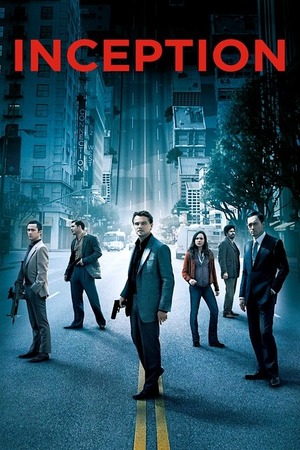
Directed by: Christopher Nolan
Starring: Leonardo DiCaprio, Joseph Gordon-Levitt, Marion Cotillard, Ellen Page, Tom Hardy, Ken Watanabe, Cillian Murphy, Michael Caine
🧠 Introduction: The Infinite Labyrinth of Dreams
Christopher Nolan’s Inception (2010) has, for over a decade, stood as one of cinema’s great modern puzzles—a blockbuster that asks its audience to question the very nature of reality, memory, and identity. The film’s closing moments, with Cobb’s totem spinning ever-closer to ambiguity, have fueled debate in dorm rooms, coffee shops, and internet forums around the world. But what is actually happening at the end of Inception? Is Cobb awake, or is he trapped in another layer of the dream? Is there even such a thing as waking up?
🌌 Layers Within Layers: The Structure of Inception
To understand the ending, we must first understand Nolan’s intricate world-building. The film follows Dom Cobb (Leonardo DiCaprio), a master “extractor” who invades dreams to steal secrets. Cobb is offered a chance to have his criminal record wiped clean if he can perform an unprecedented feat: inception—planting an idea in someone’s mind so subtly that the target believes it’s their own.
The film’s structure is famously complex, with dreams nested within dreams, each with their own rules, time dilations, and logic. Cobb leads a team through multiple dream layers to “incept” Robert Fischer (Cillian Murphy), all while battling projections of his dead wife Mal (Marion Cotillard), who serves as a literal manifestation of his guilt and trauma. The deeper the team goes, the more the boundaries between dream and reality blur—not only for Cobb, but for the audience.
⏳ The Totem: Anchor or Illusion?
Cobb’s totem—a small spinning top—serves as his supposed anchor to reality. If the top spins forever, he’s dreaming; if it falls, he’s awake. Or so the theory goes. But Nolan, a filmmaker fascinated by the power and limitations of perception, never quite lets us believe in absolute certainty. The rules of the totem are never fully explained, and their reliability is thrown into question by the fact that Cobb’s totem originally belonged to Mal. If reality is subjective, can any object truly serve as an infallible guide?
The final shot is legendary: Cobb, reunited with his children at last, sets the top spinning on the table. He rushes to embrace his kids—finally seeing their faces, something he’s been unable to do in any prior dream—while the camera lingers on the spinning top. It wobbles ever so slightly, then… the film cuts to black.
🔄 Ambiguity by Design: What the Ending Means
The ambiguity of Inception’s ending is intentional, not a trick or a puzzle to be solved, but a philosophical statement. Nolan wants the audience to inhabit Cobb’s perspective—a man so haunted by guilt and longing that he cannot distinguish between fantasy and reality, yet ultimately chooses to accept the world in front of him. In this sense, it doesn’t matter if the top falls or not. The true catharsis comes from Cobb’s decision to stop searching for proof and to surrender to joy, however fleeting or constructed it might be.
Many viewers have pointed out subtle clues suggesting Cobb is awake: his children’s slightly older appearance, the change in their clothing, and the fact that he no longer sees their faces only in memory. Others argue that, since Cobb never tests the totem, the entire “reunion” could be another dream—one last, comforting layer of unreality.
🌠 Dreams, Guilt, and Letting Go
Beyond plot mechanics, the ending is an emotional resolution to Cobb’s journey. Throughout the film, Mal’s projection sabotages every mission, a manifestation of Cobb’s unresolved guilt over her suicide. The film’s most wrenching scenes come as Cobb finally confesses to his role in Mal’s death and lets go of her memory. By confronting the shadow of his past, Cobb is able to move forward—even if the world he chooses is uncertain, even if he must accept its terms without ironclad proof.
Nolan’s insistence on ambiguity is itself a comment on the nature of dreams, love, and the stories we tell ourselves. Cobb’s final act—turning away from the totem and toward his children—mirrors the audience’s own desire for closure and certainty, even as the world offers neither.
🔍 Symbolism, Motifs, and Interpretations
Some theorists believe the entire film is Cobb’s dream, a guilt-driven odyssey in which every character and set piece is a projection of his subconscious. Others point to the presence of Michael Caine’s character, Miles, as a marker of reality (since Caine claimed in interviews that every scene he appears in is “real”). There are motifs of staircases, mirrors, and endless loops, all evoking the mind’s labyrinthine structure.
The spinning top is both an object and a metaphor: a reminder that life’s deepest truths are never wholly knowable, and that meaning comes not from certainty, but from choice. The world we live in—waking or dreaming—is shaped as much by faith and feeling as by empirical fact.
🎯 Final Thoughts: The Dreamer’s Dilemma
In the end, Inception is less a puzzle to be solved than a parable for our times—a story about the impossibility of certainty, the burden of memory, and the courage it takes to embrace life, even with all its ambiguity. The final shot, with its unresolved motion, asks us to choose: Do we wait for proof, or do we act as though we are awake, loving those around us and accepting whatever reality gives us? Nolan leaves us, like Cobb, poised on the edge of an answer that may never come, but always matters.